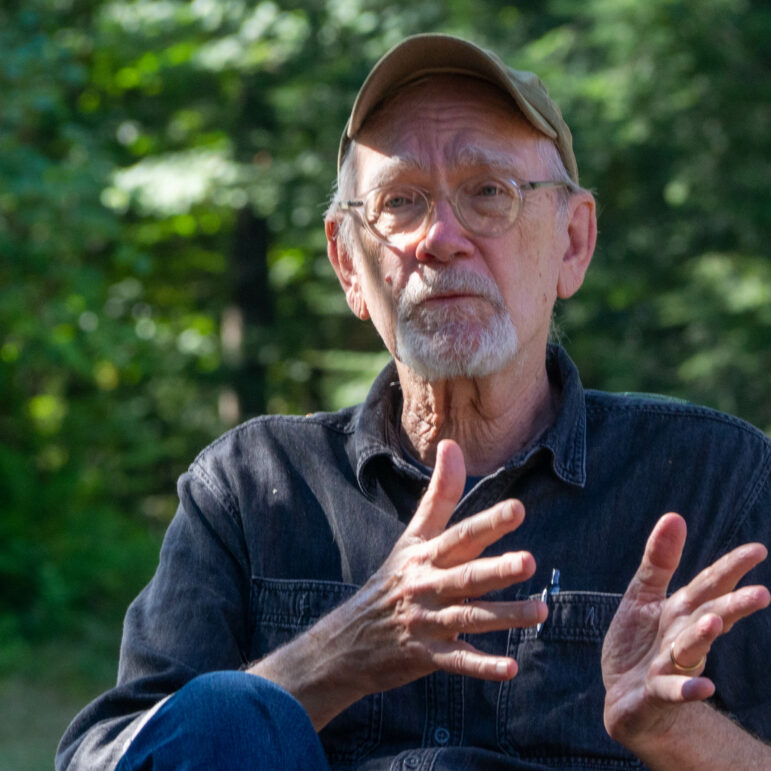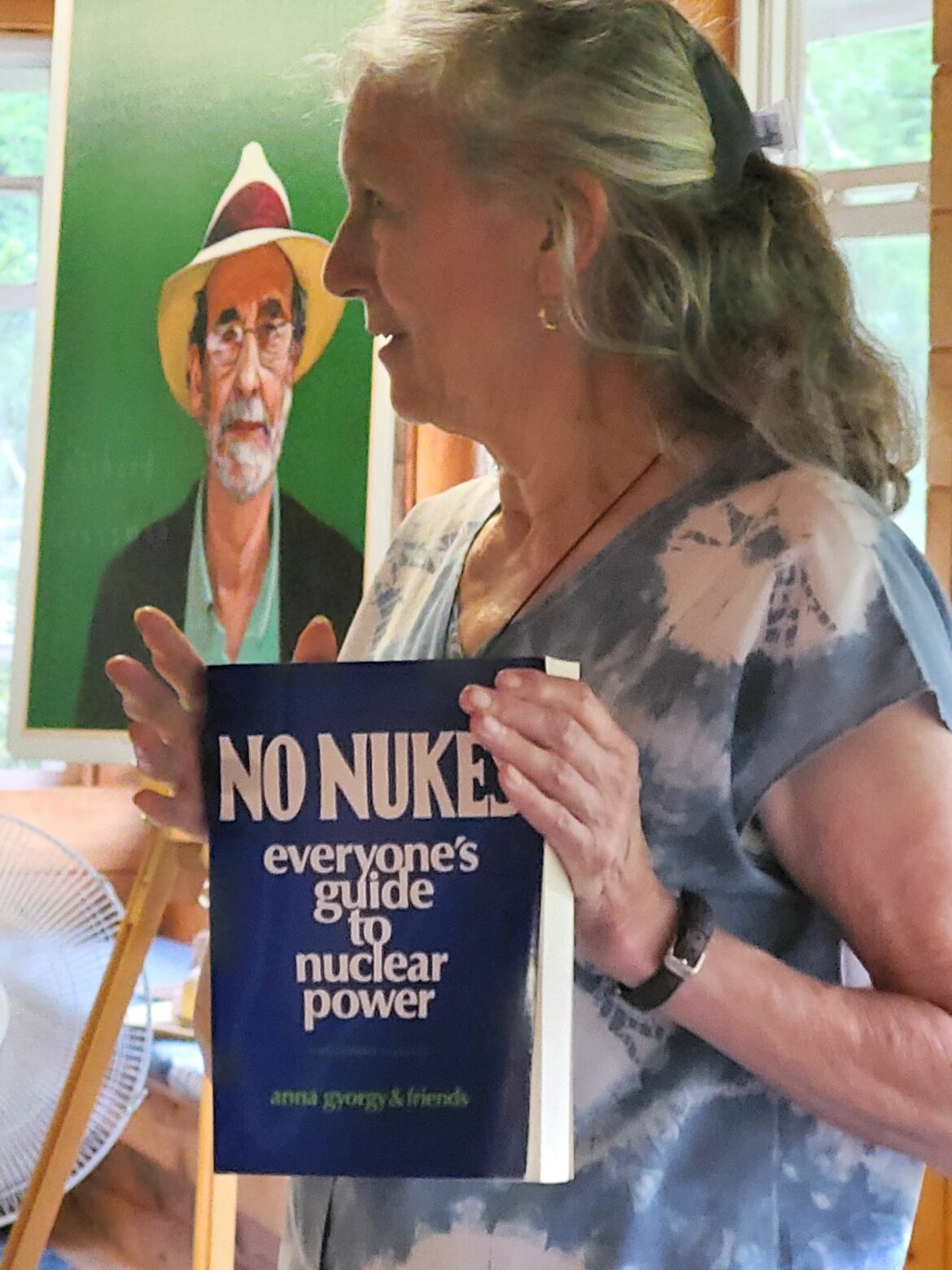
By Arnie Alpert, Active with the Activists
Arnie Alpert spent decades as a community organizer/educator in NH movements for social justice and peace. Officially retired since 2020, he keeps his hands (and feet) in the activist world while writing about past and present social movements.
When an accident at the Three Mile Island reactor in Middletown, Pennsylvania transformed the plant from a technological miracle to a radioactive ruin in a matter of moments on March 28, 1979, the American people got the message: nuclear power was a bad way to generate electricity. Wall Street tycoons, Congressional staff members, and ordinary voters figured out that the nuclear industry’s promise of safe, clean, and affordable power was a fraud.
The sea change in public opinion did not occur spontaneously; the ground had been laid by a vibrant grassroots “No Nukes” movement which spread out from Seabrook, New Hampshire, where a series of nonviolent demonstrations put the risks of nuclear power on the national agenda.
It started small, with 18 New Hampshire residents arrested at the Seabrook construction site on August 1, 1976, organized by a young group called the Clamshell Alliance. Three weeks later, a group 10 times as big was arrested. On May 1, 1977, the police hauled away 1415 peaceful protesters, so many that they used National Guard armories as temporary jails. A two-week standoff between Meldrim Thomson, the avidly pro-nuclear governor, and the jailed activists attracted attention not just to the mass arrests but also to the reasons so many people had been willing to engage in anti-nuclear civil disobedience. Inspired by Clamshell’s example, there were soon dozens of No Nukes alliances across the country, each one conducting demonstrations and reaching out to their communities with information about the hazards of nuclear power and the potential of renewable alternatives.
As the crisis at the Pennsylvania reactor developed over several days in 1979, the Clamshell office in Portsmouth, where I was working at the time, became busier than usual. Known for our creative protest techniques, we were in the rolodexes of journalists and activists from coast to coast.
Forty-five years later, Clamshell members are still campaigning against nukes, now being touted as the answer to climate catastrophe. For the Clams, many of whom have developed expertise in renewable energy sources such as solar and wind, the new pro-nuke campaign is another fraud.
“Whether they call it a ‘nuclear renaissance,’ a ‘nuclear enlightenment,’ or ‘inherently safe technology,’ nukes are just too expensive, take too long to build, and feature too many pathways to catastrophic accidents to be any kind of answer to the climate crisis,” says Paul Gunter, who was one of the first 18 Clamshell members arrested for civil disobedience at Seabrook in 1976. Now the co-director of Beyond Nuclear, a nonprofit advocacy group based in Takoma Park, Maryland, Gunter can tick off reason after reason why continued use of nuclear power — and building costly new reactors — makes climate change worse and the world less safe.
Over the past several years, “seasoned Clams,” as they jokingly call themselves, have been meeting regularly over Zoom and occasionally in person at World Fellowship in the White Mountains to discuss how to bring their message to younger generations and to boomers for whom Three Mile Island is fading from memory.
The Clams make the case on their new website, with a statement that begins, “A tsunami of nuclear power propaganda is sweeping the globe.”
Gunter says the propaganda is aligned with a multi-billion-dollar nuclear promotion campaign funded by taxpayers via the Biden administration’s Department of Energy. “They even have a plan to convert coal-fired power plants to nuclear generation,” Gunter says. Congress is on the verge of passing legislation to lessen regulatory hurdles to licensing new reactors and extend liability protection to reactor operators who can’t find insurance in the private market. A new generation of nuclear plants is backed, too, by the likes of Bill Gates and Oliver Stone.
“New nukes, we are told, are urgently needed to avert a climate crisis. This is nonsense,” the Clamshell statement asserts. “Far better options are being built much faster than nuclear power plants, at a fraction of the cost, and without the grave hazards. They include solar, wind, geothermal, hydro, efficiency, and conservation.”
The idea for the statement came from Anna Gyorgy, author of No Nukes: Everyone’s Guide to Nuclear Power, published in 1979.
True to their old principles, the statement was drafted by two writers after consultation with a larger group, reviewed by a committee, and ultimately approved by consensus. The Clams have also stuck to their belief that nonviolence is the best method for social movements to disrupt unjust systems and promote alternatives.
“Nonviolence, in the tradition of King and Gandhi, is an effective way to challenge institutional injustice,” says Gyorgy, now the communications coordinator for the Traprock Center for Peace and Justice in Deerfield, Massachusetts. She adds, “Nonviolence is also the best way to build the communities we need to get through crises caused by violence, racism, predatory capitalism, and climate disruption.” Nuclear power and its evil twin, nuclear weapons, have no role in the future Gyorgy has been trying to build for decades.

“Nukes just cannot compete with zero fuel cost solar and wind, and that means the era of base load plants running on fossil and nuclear fuel is ending,” says Roy Morrison, a former Clamshell staff member who for years has worked as a commercial solar energy developer and writes often about energy economics. “Solar arrays combined with energy storage from home roof tops already are acting as virtual power plants to meet utility demands for peak power,” he adds.
According to Morrison, new battery technology and plunging prices for solar will displace fuels that produce CO2. For Morrison, “The future for our economy and our planet lies with renewables, not nukes, oil, gas, or coal.”
Morrison and I first met in 1977, when we were arrested at Seabrook and held at the National Guard Armory in Concord (my first trip to the capitol city). Two years later, we were members of Clamshell’s office collective, based in a scruffy second-floor suite in downtown Portsmouth. Furnished by whatever we could scrounge, and with an IBM typewriter and a Gestetner mimeograph the most advanced technology in our possession, we did battle with a complex of utility companies, banks, engineering firms, and government agencies which were doing their best to foist nukes on the American public.
When a reporter from a national news agency called for our comment on Three Mile Island, I was the one who happened to pick up the phone. I don’t remember exactly what I said. What I do remember is that at roughly the same time, Dresser Industries, which made the valve which malfunctioned at TMI, was publishing pro-nuke display ads with Edward Teller, the physicist known as “the father of the H-bomb” and a dedicated advocate for all things nuclear, as their spokesperson.
When the news story came out, it went something like, “Physicist Edward Teller says nukes are safe, but Arnie Alpert from the Clamshell Alliance says they aren’t.” It’s a good memory, but more than that, it’s a reminder that grassroots movements that engage in what John Lewis called “good trouble” can shake up power structures and bring about change. In the current moment, when renewable alternatives to fossil and fissile energy are urgently needed, the Clams are trying to make it happen again.





